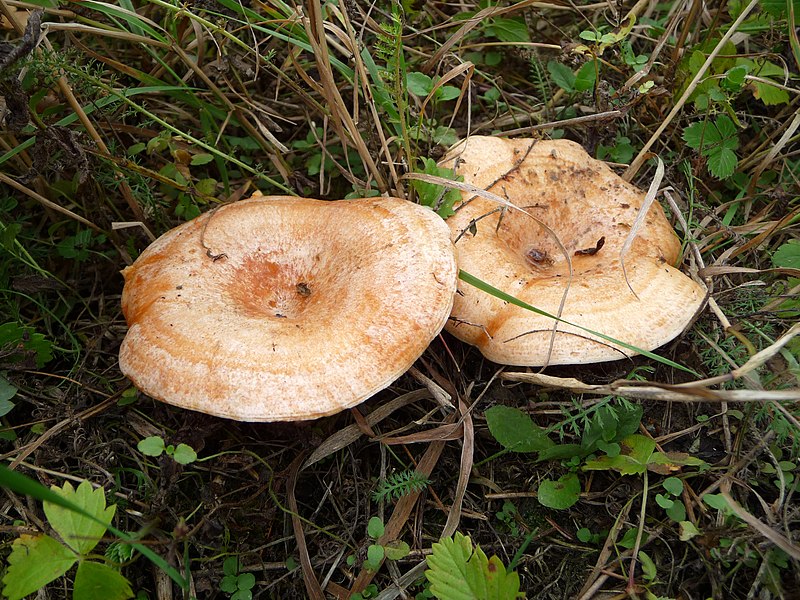Saffron Milk Cap Identification – Lactarius deliciosus
Heads up
This post is part of our “100 Plants and Mushrooms” series. Here, you’ll see the mushroom’s main parts – its cap, gills or pores, stipe, and more – all with key identification features.
Saffron Milk Cap, scientifically known as Lactarius deliciosus, is one of the well-known members of the milk-cap family.
Saffron Milk Cap: Key Parts in Photos



Where to find it
If you’re on the hunt for the Saffron Milk Cap, head to coniferous woodlands, especially those abundant with pines. This is where it comes to play. These mushrooms are mycorrhizal, implying they form a beneficial relationship with the roots of these trees.
How to identify Saffron Milk Cap
- Cap: This mushroom dons a bright carrot-orange cap, which can range anywhere between 1.5-5 inches in size. When it’s young, the edges of the cap roll inwards, and as it matures, it takes on a vase-like shape. A distinctive feature is darker orange lines forming rings on its surface. And while it might feel sticky when it’s wet, it’s often dry to the touch.
- Gills: Gills are those rib-like structures on the underside of a mushroom. In the Saffron Milk Cap, these gills are crowded and bright orange. They run a short distance down the stem, which is a feature termed as “decurrent”. If you touch or bruise them, they stain green. Cut them open, and they’ll release a bright red-orange latex, very much carrot-colored.
- Stipe: The stem, or as botanists call it, “stipe”, of this mushroom is robust and short. Averaging between 1 to 3 inches in length, it showcases a bright orange hue sprinkled with shallow pits. These little pits are referred to as “scrobiculations”.
- Spores: The spores of the Saffron Milk Cap are shaped like elongated ovals. Under a microscope, they exhibit a network-like pattern on their surface. If you ever decide to check its spore print, you’d find it to be a pale yellow to buff.
- Smell and taste: While it’s always best not to taste wild mushrooms without expert advice, the Saffron Milk Cap has a distinctive fruity smell. As for the milk or latex it exudes when cut? It starts off with a mild taste, gradually turning slightly bitter.
Want to learn more?
Our new book, “A New Forager’s Guide to Wild Foods,” is available on Amazon. It helps beginners learn about how to identify and cook with these 100 common plants and mushrooms. Click the buy button on the right and order your copy now!

Disclosure: This post includes affiliate links. If you make a purchase through these links, we may earn a commission at no extra cost to you. We appreciate your support, as it helps keep this website running. Alternatively, you can search for the book title on Amazon if you prefer not to use the links. Thank you for your understanding and support!
